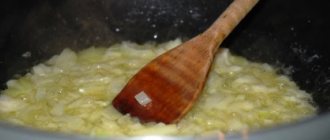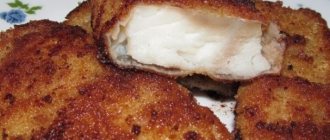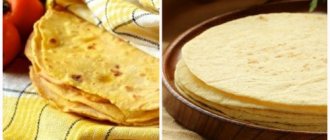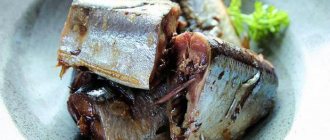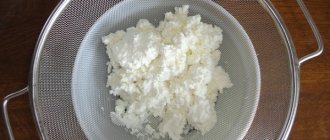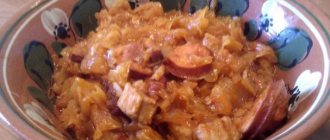Omelette is one of the most famous dishes of French cuisine. Created by local chefs more than four centuries ago, it has not lost its popularity to this day. In addition to the traditional French omelet, which includes only eggs, many other, no less interesting options for preparing this original dish have been created over the years. Today, the most popular of them is an omelette in a frying pan with milk. But, as practice shows, it can be made in different ways, using various additional ingredients.
Classic omelette in a frying pan with milk
The first step is to consider the classic milk omelet recipe. To make the dish truly fluffy, you need to take into account three important rules:
- Take 100 ml of milk for 1 egg. This proportion is considered ideal.
- Mix the starting products only with a whisk or a table fork. Under no circumstances should you use a mixer or blender.
- Cook the omelet with the lid on and do not open it until the end of the process.
So, for the classic version of a lush milk omelet, you need to take:
- 4 eggs;
- a little salt;
- 400 ml whole milk;
- any spices;
- 15-20 g olive oil.
How to make the perfect omelette in a frying pan with milk from these products:
- Break the eggs one at a time and mix them well in a bowl.
- Add a measured amount of milk, any spices and add a little salt. Continue stirring until the mixture becomes homogeneous.
- It is good to warm up the frying pan, having previously coated it with oil from the inside.
- Pour the egg mixture into the pan. In this case, the fire should be medium.
- When it sets, cover the pan with a lid and reduce the flame.
- Simmer the mixture for about 20 minutes over low heat.
- Open the lid and transfer the omelette to a plate.
If desired, the finished dish can be generously sprinkled with fresh chopped herbs.
Omelette with tomatoes and cheese in a frying pan recipe with photos without milk
The traditional recipe uses milk. But can you make a luscious breakfast without this ingredient? There are people who are lactose intolerant; it is for them that some kind of substitute is usually used. Just be sure to use fresh products for this option. There should not be a lot of liquid, because the mass will immediately settle. You can add flour or semolina here to make everything more fluffy. All additional components, such as herbs, vegetables, etc. should be added to the whipped mass.
Cooking with semolina
To make a fluffy omelette, you can do it differently. It is enough to add semolina to the recipe composition. It is known to have the unique ability to swell in liquid. The finished dish turns out fluffy and unusually soft. In this case, to work you need to take:
- 3 raw eggs;
- 50 g semolina;
- 100 g milk;
- a little salt;
- 30 g butter.
The cooking method here will be slightly different:
- First, you need to break the eggs into a deep container, then add salt and beat them well with milk.
- Add semolina and continue stirring. Here you can already use a mixer.
- Leave the prepared mixture for a quarter of an hour. During this time, the cereal will swell.
- Heat a frying pan and melt the butter in it.
- Pour the egg-semolina mixture into the frying pan and fry it covered.
The dish can be considered ready when its surface becomes matte.
With sausages
If you are tired of monotonous scrambled eggs, try this interesting option. The dish looks unusual, is simple to prepare and turns out delicious. A delicious snack or breakfast in 8 minutes.
Prepare for one serving:
- 1 sausage;
- 2 eggs;
- 2 tbsp. milk;
- Spices;
- 1 tsp. l. vegetable oil;
- 1 tsp. mayonnaise and ketchup;
- Lettuce leaves (optional).
Lightly grease the frying pan with oil. Cook the sausage for about three minutes, if you have it in an artificial casing, peel it immediately, and if you have a real one, cook it like this, just make a few punctures in it.
Break the eggs, mix with milk and spices. Beat a little with a fork until smooth. Pour ½ of the egg mixture into the heated frying pan. Spread it over the bottom in a thin layer and fry for about 3 minutes. If large bubbles form, reduce the heat. When the mixture hardens and becomes a thin egg omelet, place the sausage on the edge. Using a spatula, roll the roll. We move it to the side and pour in the rest of the mixture. Fry a little again. Wrap the sausage in a second omelette layer and roll it into a tight roll. Place on a plate with lettuce leaves. Draw a pattern on top with mayonnaise and ketchup. You can cook with sausage, but it’s better to add it directly to the mixture and then fry it.
Step-by-step recipe with cheese
An interesting recipe for an omelet with milk and cheese is perfect for an ideal breakfast. The dish turns out not only fluffy, but also very aromatic. For this option you will need:
- 50 ml fresh milk;
- 3 eggs;
- 50 g hard cheese;
- salt;
- 20 g butter.
To prepare this omelet, you need:
- Break eggs into a plate.
- Add fresh milk and whisk it well. The mixture needs to be lightly salted. If desired, you can add a little pepper for additional flavor.
- Grate the cheese on a medium-mesh grater.
- Add it to the egg-milk mixture. Mix again.
- Heat the frying pan while melting the butter.
- Pour in the prepared omelette mixture.
- Fry covered with a medium flame.
The mass rises quickly, remaining tender and fluffy until the end of frying. The finished omelette in a plate can be sprinkled with fresh dill.
Classic recipe
Both adults and children enjoy eating this breakfast. There are many variations: with sausage, peas, tomatoes and more. The basic rule is that the components are mixed, but not whipped. Most people prefer the simple milk version, which doesn't have any toppings, just a simple egg flavor. For the right dish, you need to take a deep plate, a bowl, and a medium-sized frying pan with a lid.
Products:
- Per serving 2-3 eggs;
- 50 ml of milk for every two testicles;
- Oil for frying;
- Ground pepper and salt.
It's better to preheat the frying pan in advance. If you have good dishes in which nothing sticks, you can do without oil. We break eggs for one person (2-3 pieces) into a suitable container. Mix the yolk and white with a fork. Pour in milk and salt. Lightly beat with a fork again. A mixer is not suitable for this; we do not need just foam, but only light bubbles. Stir for about one minute and immediately pour into a hot frying pan.
The bottom will immediately begin to fry, when we see that the edges have thickened slightly, we reduce the heat and cook like this. This way it will be able to bake completely, but will not burn. You can cover to thicken everything. Usually an omelet is baked from the edges to the middle. When it is no longer liquid, everything is ready and you can remove it. Then you can sprinkle it on a plate with herbs or pepper, you get a hearty and healthy breakfast.
Lush omelet with flour and milk
To make the omelette more nutritious and high in calories, it is sometimes made with flour and milk. This option is also not particularly difficult. To work you will need:
- 4 large eggs;
- 40 g wheat flour;
- 60 ml whole milk;
- table salt;
- butter;
- pepper (optional).
How to cook an omelette with flour to make it fluffy:
- Break the eggs, separating the whites from the yolks. First you need to beat the whites well with a whisk. Then add the yolks, salt and pepper (if desired) and continue beating.
- Pour in the milk and add the flour, mix thoroughly so that there are not even small lumps.
- Place a frying pan on the fire and heat a piece of oil in it. It should melt completely.
- Pour the prepared mixture so that it is evenly distributed over the surface. If the lower part of the omelette suddenly starts to burn somewhere, you need to carefully lift the “egg pancake” from that side and turn the frying pan so that the liquid mass flows down from the top.
The omelette can be considered ready when its surface has thickened and slightly compacted, while remaining fluffy and tender.
Diet breakfast
As we have already said, this is an excellent breakfast for those who choose proper nutrition. It is very nutritious and incredibly healthy.
Components:
- 4 chicken eggs;
- 10-15 cherry tomatoes;
- 100 ml milk;
- 45 g low-fat cheese;
- Olive oil;
- Salt and herbs to taste.
Finely grate the cheese and cut the cherry tomatoes into slices. Break the eggs into a container, stir them with a whisk for about 30 seconds, pour in the milk, add salt and stir until everything is well combined. We put the frying pan on the fire, when it warms up, pour a little oil, add the tomatoes and simmer for a couple of minutes.
We send the egg mass here, mix gently so that everything is fully fried. Add the greens, close the lid and leave for 4 minutes. When the omelette hardens, reduce the heat and add the cheese. Let it sit for fifteen seconds. Remove from heat and roll up into an envelope (edges toward the center on three sides). Can be served with fresh vegetables.
With ham and onions
To make the dish more satisfying and nutritious, it is better to prepare an omelette with ham and onions. Men will like this breakfast more. For this you will need:
- 6 eggs;
- 100 g ham;
- 1 onion;
- 200 ml fat milk;
- 120 g of any hard cheese;
- 40 g flour;
- 2 fresh tomatoes;
- dill and any seasonings.
Making such a dish will not be difficult at all:
- Cut the ham into strips.
- Finely chop the onion.
- Roughly chop the tomatoes into pieces.
- Grate the cheese on a large mesh grater.
- In a heated frying pan, sauté the onion in vegetable oil.
- Add chopped ham with tomatoes, stir, heat well.
- Once the mixture is lightly browned, reduce the heat and cover the pan with a lid to simmer.
- During this time, you need to have time to beat the eggs with the milk.
- Pour the mixture into the pan on top of the ham and vegetables.
- As soon as it reaches the half-cooked stage, sprinkle the surface with cheese. Continue frying, covered, for about 2 more minutes.
The omelette is ready when the cheese on the surface is completely melted. After this, you need to transfer it to a plate and decorate it to your liking.
Lush classic option
Very often you want to make a fluffy omelette, like in kindergarten. It can be cooked in a slow cooker or in a simple frying pan. To get an airy “delicacy” using this recipe, remember that:
- For 1 testicle you should take 100 milliliters of milk;
- We won’t beat; you shouldn’t use a mixer or blender either, just take a fork or a kitchen whisk;
- We cook with the lid closed; there is no need to open it so that nothing settles.
We need to take:
- 400 ml cow's milk;
- 4 testicles;
- 1 tsp. vegetable oils;
- Spices.
Combine all ingredients and stir. Pour oil into a frying pan, pour the mixture and turn on low heat. When everything has set, close it, reduce the heat and simmer for about twenty minutes.
Hearty breakfast with sausage and tomatoes
If you add regular boiled sausage and tomatoes to the dish, you get a fairly simple but very satisfying breakfast. Moreover, preparing this version of an omelet in a frying pan with milk is quick and easy. First you need to collect all the necessary ingredients on your desktop:
- 3 eggs;
- 1 tomato;
- 50 ml whole milk;
- a little salt and pepper;
- 50 g sausage;
- 10 ml of any sunflower oil;
- parsley.
Omelette preparation technology:
- Beat the eggs well with salt, milk and pepper.
- Wash the tomatoes and then cut them into cubes.
- Grind the sausage in the same way.
- Heat oil in a frying pan with a thick bottom. For more flavor, you can add a piece of butter to the sunflower oil.
- Place the sausage and tomatoes in a frying pan and fry them for about two to three minutes.
- Pour the egg-milk mixture over the sautéed products and stir.
- Fry covered until the surface of the complex “pancake” sets. After this, you can open it and sprinkle the finished omelette with fresh herbs.
This dish can be a good start to the day. It will not only lift your spirits, but also give you a good boost of energy.
6 egg omelette recipe. Calorie, chemical composition and nutritional value.
Nutritional value and chemical composition of “6 egg omelette”.
The table shows the nutritional content (calories, proteins, fats, carbohydrates, vitamins and minerals) per 100 grams of edible portion.
| Nutrient | Quantity | Norm** | % of the norm in 100 g | % of the norm in 100 kcal | 100% normal |
| Calorie content | 127.4 kcal | 1684 kcal | 7.6% | 6% | 1322 g |
| Squirrels | 10.1 g | 76 g | 13.3% | 10.4% | 752 g |
| Fats | 8.9 g | 56 g | 15.9% | 12.5% | 629 g |
| Carbohydrates | 1.7 g | 219 g | 0.8% | 0.6% | 12882 g |
| Water | 54.7 g | 2273 g | 2.4% | 1.9% | 4155 g |
| Ash | 0.7382 g | ~ | |||
| Vitamins | |||||
| Vitamin A, RE | 191.9 mcg | 900 mcg | 21.3% | 16.7% | 469 g |
| Retinol | 0.185 mg | ~ | |||
| beta carotene | 0.044 mg | 5 mg | 0.9% | 0.7% | 11364 g |
| Vitamin B1, thiamine | 0.052 mg | 1.5 mg | 3.5% | 2.7% | 2885 g |
| Vitamin B2, riboflavin | 0.325 mg | 1.8 mg | 18.1% | 14.2% | 554 g |
| Vitamin B4, choline | 185.29 mg | 500 mg | 37.1% | 29.1% | 270 g |
| Vitamin B5, pantothenic | 0.96 mg | 5 mg | 19.2% | 15.1% | 521 g |
| Vitamin B6, pyridoxine | 0.103 mg | 2 mg | 5.2% | 4.1% | 1942 |
| Vitamin B9, folates | 5.168 mcg | 400 mcg | 1.3% | 1% | 7740 g |
| Vitamin B12, cobalamin | 0.384 mcg | 3 mcg | 12.8% | 10% | 781 g |
| Vitamin D, calciferol | 1.624 mcg | 10 mcg | 16.2% | 12.7% | 616 g |
| Vitamin E, alpha tocopherol, TE | 0.443 mg | 15 mg | 3% | 2.4% | 3386 g |
| Vitamin H, biotin | 14.912 mcg | 50 mcg | 29.8% | 23.4% | 335 g |
| Vitamin K, phylloquinone | 0.2 mcg | 120 mcg | 0.2% | 0.2% | 60000 g |
| Vitamin RR, NE | 2.6576 mg | 20 mg | 13.3% | 10.4% | 753 g |
| Niacin | 0.14 mg | ~ | |||
| Macronutrients | |||||
| Potassium, K | 103.35 mg | 2500 mg | 4.1% | 3.2% | 2419 g |
| Calcium, Ca | 40.6 mg | 1000 mg | 4.1% | 3.2% | 2463 g |
| Magnesium, Mg | 8.86 mg | 400 mg | 2.2% | 1.7% | 4515 g |
| Sodium, Na | 98.92 mg | 1300 mg | 7.6% | 6% | 1314 g |
| Sera, S | 129.93 mg | 1000 mg | 13% | 10.2% | 770 g |
| Phosphorus, P | 141.7 mg | 800 mg | 17.7% | 13.9% | 565 g |
| Chlorine, Cl | 115.16 mg | 2300 mg | 5% | 3.9% | 1997 |
| Microelements | |||||
| Iron, Fe | 1.846 mg | 18 mg | 10.3% | 8.1% | 975 g |
| Yod, I | 14.76 mcg | 150 mcg | 9.8% | 7.7% | 1016 g |
| Cobalt, Co | 7.382 mcg | 10 mcg | 73.8% | 57.9% | 135 g |
| Manganese, Mn | 0.0214 mg | 2 mg | 1.1% | 0.9% | 9346 g |
| Copper, Cu | 61.27 mcg | 1000 mcg | 6.1% | 4.8% | 1632 g |
| Molybdenum, Mo | 4.429 mcg | 70 mcg | 6.3% | 4.9% | 1580 g |
| Selenium, Se | 23.402 mcg | 55 mcg | 42.5% | 33.4% | 235 g |
| Fluorine, F | 40.6 mcg | 4000 mcg | 1% | 0.8% | 9852 g |
| Chromium, Cr | 2.95 mcg | 50 mcg | 5.9% | 4.6% | 1695 g |
| Zinc, Zn | 0.8194 mg | 12 mg | 6.8% | 5.3% | 1464 g |
| Digestible carbohydrates | |||||
| Mono- and disaccharides (sugars) | 0.5 g | max 100 g | |||
| Essential amino acids | |||||
| Arginine* | 0.5832 g | ~ | |||
| Valin | 0.5684 g | ~ | |||
| Histidine* | 0.251 g | ~ | |||
| Isoleucine | 0.4429 g | ~ | |||
| Leucine | 0.7973 g | ~ | |||
| Lysine | 0.6644 g | ~ | |||
| Methionine | 0.3101 g | ~ | |||
| Methionine + Cysteine | 0.5315 g | ~ | |||
| Threonine | 0.4503 g | ~ | |||
| Tryptophan | 0.1476 g | ~ | |||
| Phenylalanine | 0.4798 g | ~ | |||
| Phenylalanine+Tyrosine | 0.8342 g | ~ | |||
| Nonessential amino acids | |||||
| Alanin | 0.5241 g | ~ | |||
| Aspartic acid | 0.908 g | ~ | |||
| Glycine | 0.3101 g | ~ | |||
| Glutamic acid | 1.3066 g | ~ | |||
| Proline | 0.2953 g | ~ | |||
| Serin | 0.6865 g | ~ | |||
| Tyrosine | 0.3543 g | ~ | |||
| Cysteine | 0.2141 g | ~ | |||
| Sterols (sterols) | |||||
| Cholesterol | 420.79 mg | max 300 mg | |||
| Saturated fatty acids | |||||
| Saturated fatty acids | 2.2 g | max 18.7 g | |||
| 14:0 Miristinovaya | 0.0295 g | ~ | |||
| 15:0 Pentadecane | 0.0074 g | ~ | |||
| 16:0 Palmitinaya | 1.5134 g | ~ | |||
| 17:0 Margarine | 0.0221 g | ~ | |||
| 18:0 Stearic | 0.6496 g | ~ | |||
| 20:0 Arakhinovaya | 0.0221 g | ~ | |||
| Monounsaturated fatty acids | 3.669 g | min 16.8 g | 21.8% | 17.1% | |
| 16:1 Palmitoleic | 0.2879 g | ~ | |||
| 17:1 Heptadecene | 0.0074 g | ~ | |||
| 18:1 Oleic (omega-9) | 3.0193 g | ~ | |||
| 20:1 Gadoleic (omega-9) | 0.0295 g | ~ | |||
| Polyunsaturated fatty acids | 0.9302 g | from 11.2 to 20.6 g | 8.3% | 6.5% | |
| 18:2 Linolevaya | 0.812 g | ~ | |||
| 18:3 Linolenic | 0.0443 g | ~ | |||
| 20:4 Arachidonic | 0.0738 g | ~ | |||
| Omega-6 fatty acids | 0.9 g | from 4.7 to 16.8 g | 19.1% | 15% |
The energy value of an omelet made from 6 eggs is 127.4 kcal.
Primary Source: Created in the application by the user. Read more.
** This table shows the average levels of vitamins and minerals for an adult. If you want to know the norms taking into account your gender, age and other factors, then use the “My Healthy Diet” application.
Variations
- Narjesi or scrambled eggs with milk and spinach - an Iranian dish - is prepared with fried onions, spinach and garlic, seasoned with salt and pepper.
- Kajineh, another version of the Iranian omelette, is made from beaten eggs and sugar.
- Bagala gato, a traditional Iranian dish, is made with bagala (fava beans), dill, eggs and spices.
- Japanese scrambled eggs with milk are called "Fu Yang Eggs" and contain a choice of sliced ham, pork, shrimp, chicken, beef, and lobster meat. Vegetables such as bean sprouts, bamboo shoots, cabbage, and green onions can be a component. Sometimes mushrooms and sweet swampweed are added to this omelet. Another Japanese dish is scrambled eggs with oysters.
- The Denver omelet, also known as the Southwestern or Western, is a mixture of sliced ham, onion, green bell pepper, eggs and other ingredients. It is commonly served in the southwestern United States with a side of hash browns or fries and may be topped with cheese.
- A dish made with only egg whites is a variation that excludes the yolk so that the finished food does not contain the fat and cholesterol that are found only in the yolks.
- French scrambled eggs with milk are quickly fried on an extremely hot specially designed surface. The technology is based on a large amount of ghee (because it can withstand high temperatures) in proportion to the eggs, which is why they cook quickly and do not burn. The omelette is served with salt and pepper, but sometimes tomatoes and chopped herbs (usually parsley, green onions, tarragon, marjoram, lemon balm and chervil) or onions are added to it. The French dish is removed from the frying pan differently than in the USA. It is simply placed directly on the plate.
- Greek eggs and milk contain fried or sautéed vegetables, pasta and various dinner table scraps, all tied together by egg. When they are cooked, they are covered with a plate, with which they are then turned over to the other side. Unlike many other omelettes, Greek omelets emphasize the flavor of the ingredients filling it rather than the eggs themselves.
- A biscuit omelet or soufflé omelet is prepared from separately whipped whites into a strong foam, carefully mixed with yolks, and a small amount of flour and sugar. Typically this type of dish is folded in half and filled with a sweet filling.
- Farm scrambled eggs are popular in Southern Germany and Austria. Chopped onions, pieces of boiled potatoes and smoked bacon are fried in a frying pan, onto which the egg mixture is then poured and cooked. It may also contain various herbs, mushrooms, tomatoes or gherkins.
- Frittata is an Italian dish, a type of open omelet that consists of cheese, vegetables, eggs and sometimes even leftover pasta. It cooks slowly. Except for the frying oil, all ingredients are mixed with the eggs in advance.
- Indian eggs, also called Masala, are often cooked with many spices that vary depending on the region. The most commonly used ingredients are finely chopped green chillies, onions, cilantro, ground coriander, cumin and a pinch of turmeric. Each ingredient is added separately to the eggs before beating. Indian tomato omelet does not contain eggs, but is called so because of its external resemblance.
- In the Netherlands, farm-fried eggs are also common. It usually consists of 2-3 eggs, a mixture of sauteed onions, mushrooms, potatoes, bell peppers, leeks, green peas, salt and pepper. There are many variations of this dish.
- Spanish potato omelette or tortilla is a traditional and very popular thick scrambled egg containing julienned potatoes that have been fried in oil. It may also include chopped onion and other additives such as cheese, bell pepper and ham.
- In Morocco, this dish is also called tortilla. It contains the same ingredients as the Spanish one, but with the addition of cumin and fleur de sel.
- In the UK, omelette is traditionally prepared with cheese and milk. Often, after browning on one side, it is not rolled, but turned over and fried on the other.
- In Japan, the classic scrambled egg is called tamagoyaki. The recipe consists of mixing eggs with mirin, soy sauce, katsuobushi, sugar and water. This mixture is prepared in a special rectangular frying pan. First, the future dish is poured onto its surface in a thin layer, and then quickly rolled up using chopsticks. This creates a sausage in one corner of the pan. A thin layer is poured again and again rolled into a tube with chopsticks along with the already prepared omelette to the other side of the frying pan. This procedure is repeated until all the mixture is used up. The result is a dense, cylindrical tamagoyaki made up of many thin layers. It is then shaped into a rectangular or round shape using a sushi mat and cut into portions. The word "omelet" (pronounced "omuretsu") can mean Denver omelette. Omurice (from the words "omelet" and "rice") is a dish filled with rice, often served with a large amount of ketchup. Omusoba is a fried egg filled with yakisoba.
- In Thai cooking, the traditional omelette is called "kai chio" (kai means "egg" and chio means "frying"). The egg mixture is prepared in a large, deep cast-iron skillet using 1-2 tbsp. vegetable oil. Served with boiled rice and Sriracha sauce. A variation of this dish is kai chio son gruwan, which is served with fried meat and vegetables. Another type of Thai omelette is called kai yat sai, which literally means deviled eggs.
- Containing bacon and breaded oysters, Hantown is an unusual dish that originated in Placerville, California, during the Gold Rush.
- Telur dadar is a flat omelette served as a side dish with rice, fried eggs with onions and chili peppers. It can be found in Malaysia and Indonesia.
- In the Philippines, the term for scrambled eggs is "torta". The term should not be confused with the Mexican torta (sandwich), Italian (pie), or Spanish (cupcake). The dish is typically served for breakfast with countless toppings, including onions, garlic, tomatoes, corned beef, potatoes, bell peppers, raisins, and leftovers from the night before, such as grilled eggplant, pieces of pork or beef. Serve on its own or with fried garlic rice and banana ketchup.
